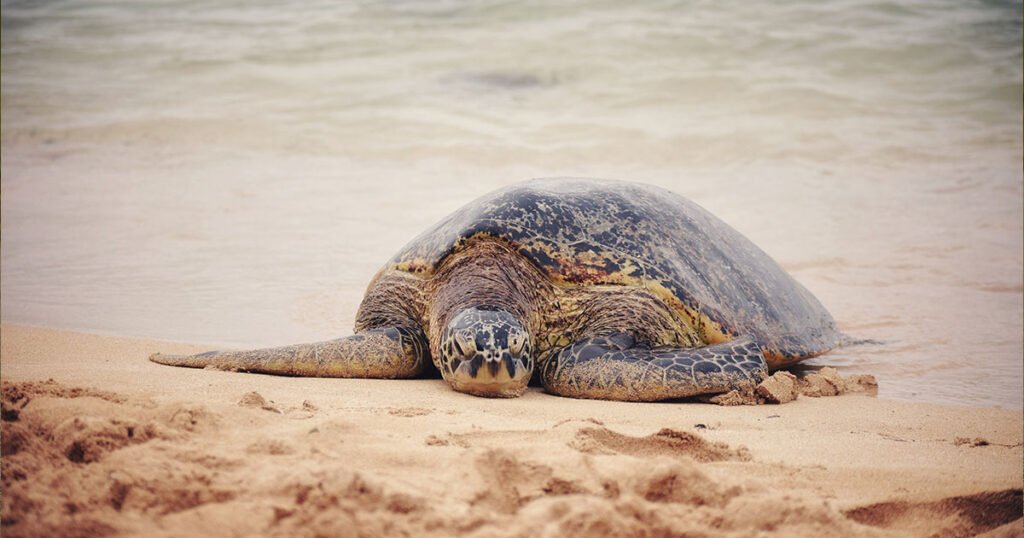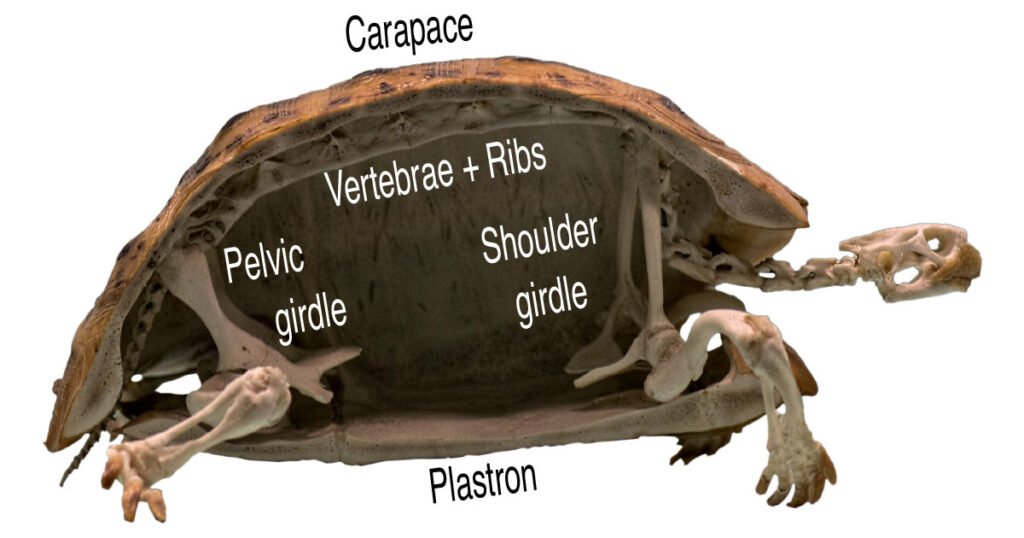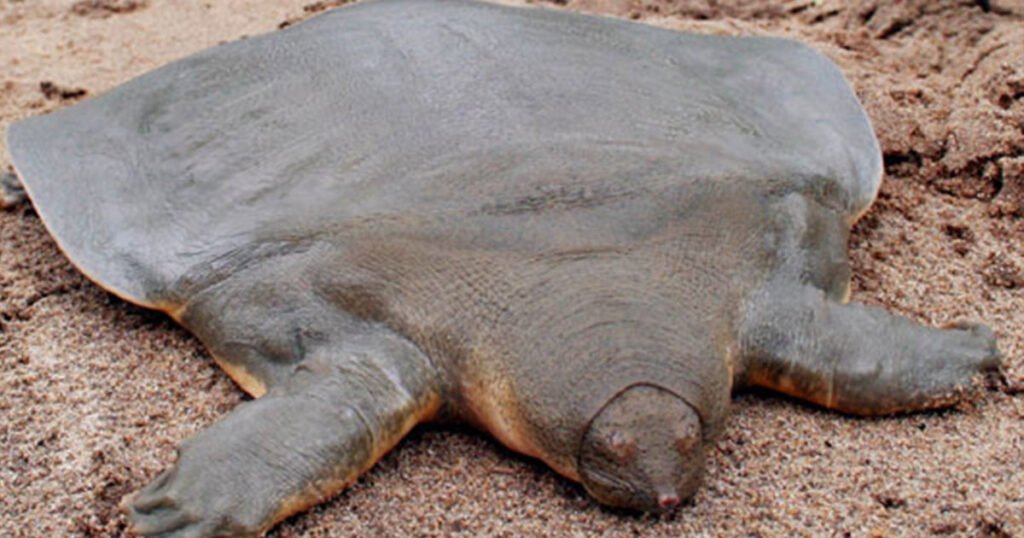You’ve probably seen a picture of a turtle sitting in its hard shell before, right? Most of us are familiar with the picture of a turtle with its hard, protective shell. It’s like their little house, always tagging along wherever they go. But, have you ever wondered: Can a turtle live without a shell? This question may seem strange, but it’s a valid one.
After all, many animals can survive without certain body parts or adaptations like starfish or lizards. However, the shell is a defining characteristic for turtles, and it’s hard to picture them without it. So, can a turtle live without its shell? This article explores whether can a turtle live without a shell and why living without it would be like a superhero losing their powers. Let’s dive in.
Table of Contents
Can a Turtle Live Without a Shell

The straightforward answer is no; a turtle cannot live without its shell. The turtle’s shell is an integral part of its body and serves as its skeletal structure and protective covering. It comprises two main parts: the upper carapace and the lower plastron.
The shell is fused to the turtle’s vertebrae and rib cage, providing structural support and protection for vital organs. Having no shell makes a turtle extremely vulnerable to injuries, infections, and other dangers, thus making it impossible for it to survive.
Now you know the answer: can turtles live without a shell? Let’s take a closer look at a turtle shell.
What Makes Turtle Shells?

As mentioned above a turtle without a shell can not survive, but what are they made of? Let’s find out what a turtle’s shell is made of.
Composition of the Shell
- Carapace and Plastron: A turtle’s shell consists of two main parts: the carapace (the top) and the plastron (the bottom). Bone makes up these parts, which are covered by tough, scale-like structures called scutes.
- Scutes Composition: Scutes consist primarily of keratin, a vital protein also found in human hair and nails. They protect the bone and the outer layer of the shell.
Role of the Carapace
- Protective Armor: A turtle’s carapace protects its back and internal organs like a shield. In addition to providing structure and stability to the shell, it’s also connected to the turtle’s ribs and spine.
- Shape Adaptations: Sea turtles often have flatter carapaces, while terrestrial ones have more domed shapes, reflecting their habitat and lifestyle.
Function of the Plastron
- Internal Organ Protection: The Plastron protects the lungs, heart, stomach, and intestines of turtles. It consists of bony plates, forming a protective barrier.
- Role in Retraction: The Plastron allows the turtle to fold its head, legs, and tail, which serves as an additional layer of protection.
How Does The Turtle Shell Work?
Now, that we know the main components of a turtle shell, it is time to dive into how the shell works.
Structural Integrity
The top part of the shell (carapace) and the bottom part (plastron) of a turtle are connected along the edges. This connection makes the shell strong and sturdy. The small, tough scales on the shell (scutes) work like hooks. When there’s danger, these scutes help the shell to close tightly, keeping the turtle safe inside.
Lifelong Development
- Growth and Hardening: Baby turtles have soft shells that harden over time. The turtle’s scutes grow thicker and stronger as it grows.
- Age Indicators: Just like tree growth rings, turtle shells often display rings and patterns that indicate their age. Over time, growth patterns and changes in the turtle’s shell cause these rings to form.
Adaptation to the Environment
Different turtle species have unique shell shapes adapted to their habitats. Sea turtles have flat shells for swimming, while terrestrial ones have domed shells for protection on land.
The Importance of Turtle Shells

The shells of turtles serve many purposes, as we have already learned from above. Here are some of the reasons why a turtle’s shell is vital to its survival:
Essential Body Part
Turtles carry their shells around with them. The shell of a turtle is like its suit. Just like our skin, it’s not a thing it wears; it’s a part of its body.
Imagine a turtle without its shell is like us without our skin. Shells aren’t just for looks. In addition to the turtle’s ribs and spine, it’s attached to its insides, including its vital organs. So, it’s vital, just like our skin protects our insides, too!
Read More: Turtle Shell Fungus: Causes and Essential Care
Protection from Danger
Shells act as superhero shields for Turtles! It protects turtles from predators. Even giant, tough creatures like Alligators have trouble breaking a turtle’s shell.
Helps with Movement
Did you know turtles don’t just have shells for protection? They actually use it to move around. Imagine a turtle without its shell — it would struggle to move in the way it does now. The turtle’s shell acts like a sleek boat, helping it glide smoothly through the water during swimming. Almost like magic, it makes swimming look so graceful!
What about land turtles? Well, their shell is like a helpful shovel. In addition to providing support, it also allows them to dig deep holes or cozy burrows to sleep in. Without their shells, turtles would find it tricky to move around and do everything they love.
Supports Health Needs
Turtles need sunlight for Vitamin D3. Their shells help soak up sunlight and make this important vitamin. Furthermore, the shell stores vital minerals like calcium and magnesium that keep a turtle healthy. The turtle out of the shell would have weaker bones and could get sick more easily without these minerals and sunlight.
Another incredible thing? A turtle’s shell is like a special cleaner inside its body. Turtles take long naps during hibernation, which changes how they breathe. It can cause a harmful substance called lactic acid build-up. The shell helps eliminate this bad stuff, keeping the turtle healthy and happy!
Perfect Camouflage
The turtle shell looks simple (terrestrial), but that’s on purpose. Its simple colors – brown, black, or olive – help it blend in with its surroundings. Turtles would lose this unique ability to blend in and stay safe without their shells. However, we see many colorful sea turtles.
Imagine a turtle out of its shell trying to hide without its natural colors. When hidden in places such as mud or leaves, it would shine like a bright light in the dark! But with their plain shell, turtles can easily sneak away and stay hidden from animals that might want to catch them for a snack.
Read More: What Does A Turtle Without A Shell Look Like?
Final Thoughts
That’s all from today’s round-up on turtle shells and “Can a turtle live without a shell”? Turtles cannot survive without their shells. In addition to protecting and supporting it, the shell is an integral part of its structure. Turtles need it to protect their organs and overall health. If the turtle’s shell gets damaged, it has a much lower chance of surviving. The shell is crucial in ensuring turtles’ welfare in their natural habitat.
